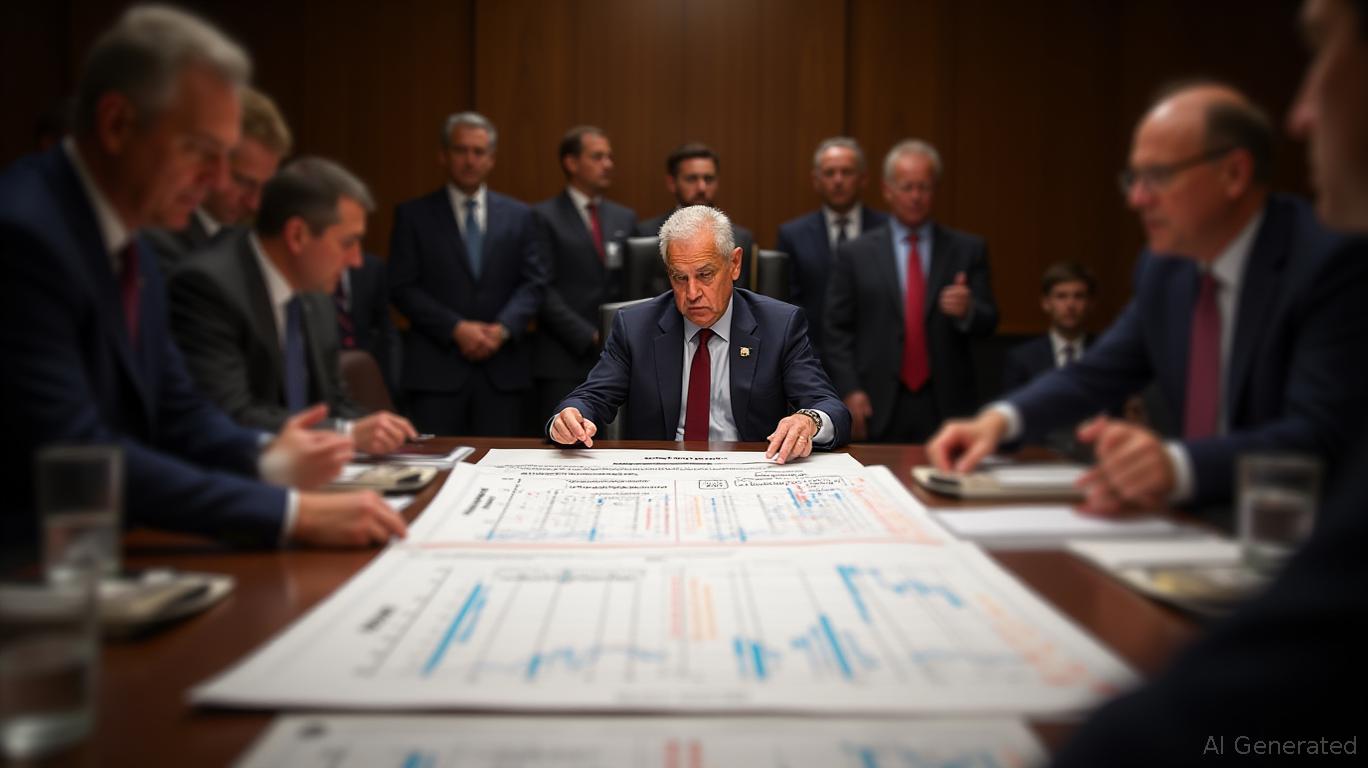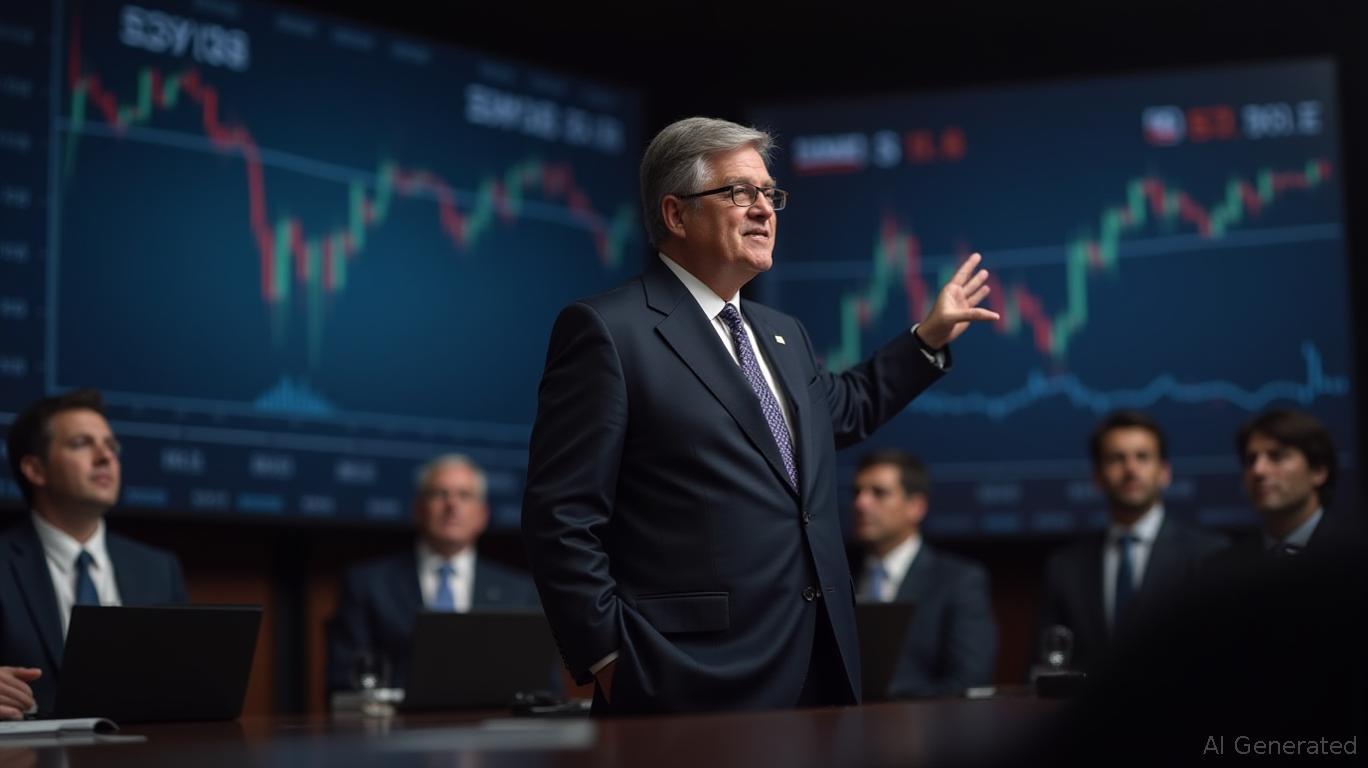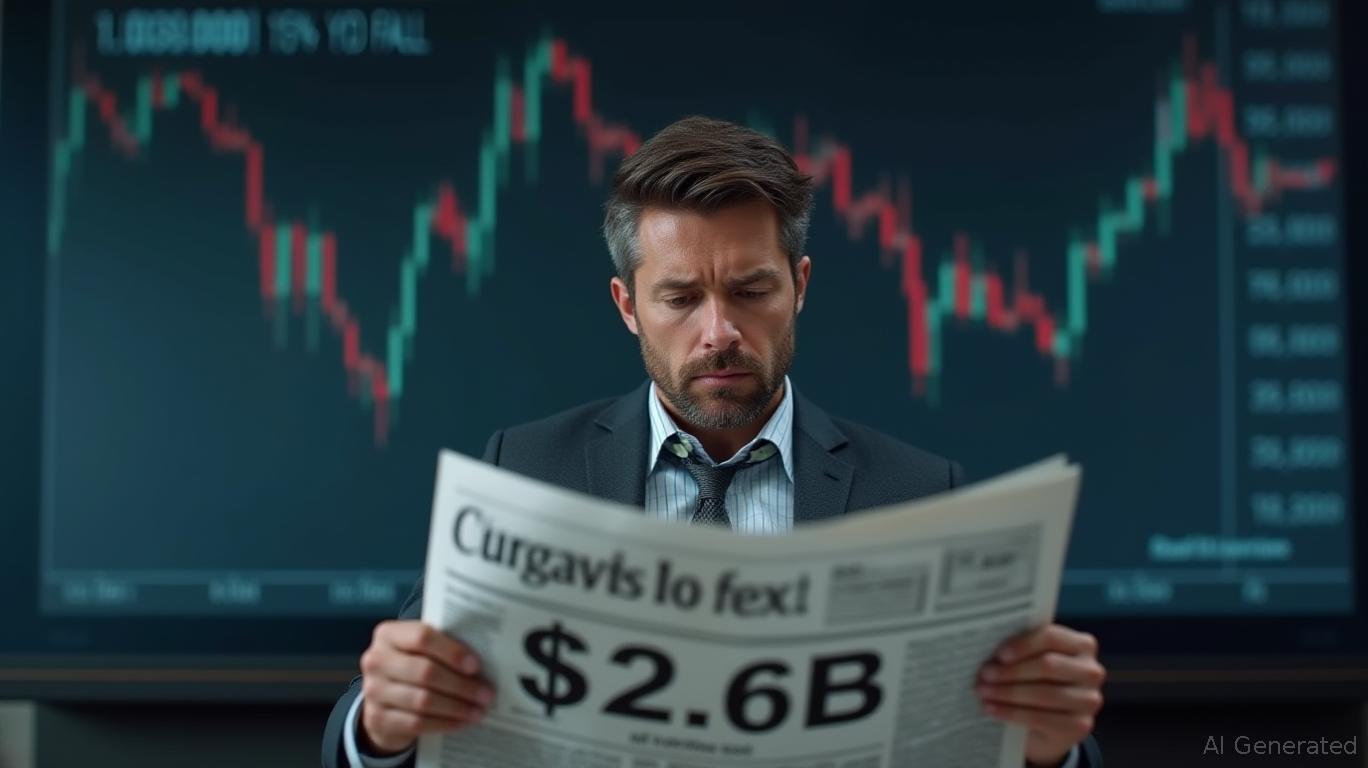Fed's Prospects for Rate Reductions Clouded by Inflation Concerns and Diverging Labor Market Trends
- Fed's December rate cut probability fell to 63% as policymakers split over inflation risks and labor market challenges, with internal dissent emerging since 2019. - New Governor Miran supported a 50bps cut aligning with Trump's stance, while Schmid opposed it, citing structural labor issues and inflation risks. - Government shutdown delayed key employment data, forcing the Fed to act on incomplete information despite market's 63% cut expectation. - Dallas Fed's Logan warned against "forgone conclusion" o
The likelihood of the Federal Reserve lowering interest rates by 25 basis points in December has dropped to 63%, a decrease from the near certainty seen earlier this week. This change comes as traders adjust their forecasts in response to mixed messages from Fed officials and recent economic indicators, according to remarks from
The Fed’s recent 25 basis point rate cut, announced on October 30, exposed internal disagreements. Stephen Miran, a new member of the board, advocated for a more substantial 50 basis point reduction, echoing President Donald Trump’s push for a more aggressive approach. In contrast, Kansas City Fed President Jeffrey Schmid opposed the cut, contending that the labor market’s challenges are structural and not cyclical, and warning that the move could hinder inflation management, as reported by the

Initially, markets had assigned a 95% probability to a December rate cut, but this has since declined to 63% as Fed leaders urged caution. During a press briefing, Chair Jerome Powell stressed that the December outcome would depend on forthcoming data, especially employment figures, which have been delayed due to the ongoing government shutdown. Important reports, such as September’s jobs data and weekly unemployment claims, remain unavailable, forcing the Fed to make decisions with incomplete information, according to
Conflicting labor market signals have further complicated the situation. While overall unemployment is still low, demographic breakdowns reveal higher joblessness among Black workers. Powell admitted that the Fed’s tools cannot address specific groups, highlighting the difficulty of managing both inflation and equitable employment, as noted by the New York Times. Meanwhile, Cleveland Fed President Beth Hammack and Dallas Fed President Lorie Logan have taken a more hawkish stance, with Hammack indicating she would have preferred to keep rates unchanged in October to maintain momentum against inflation, according to
Despite these internal disagreements, the market still leans toward expecting a rate cut. The CME FedWatch tool continues to indicate a 63% chance of a December reduction, with analysts at TD Securities suggesting the Fed is likely to maintain a "dovish tilt" given weak labor data, according to FXStreet. However, Dallas Fed President Logan countered this view, arguing that persistent inflation warrants a pause, stating, "A further reduction in the policy rate at the December meeting is not a forgone conclusion—far from it," as Dallas Fed's Logan remarked.
The ongoing government shutdown has further complicated matters. With federal employees going unpaid for over six weeks, the resulting economic strain could prompt the Fed to act sooner, though Powell cautioned that missing data could limit the effectiveness of any policy changes, according to FXStreet. The Fed’s next moves will be closely monitored as it tries to balance inflation risks with vulnerabilities in the labor market.
Disclaimer: The content of this article solely reflects the author's opinion and does not represent the platform in any capacity. This article is not intended to serve as a reference for making investment decisions.
You may also like
Bitcoin Updates: Fed’s Softer Stance Supports Both Economic Expansion and Inflation—Positive Momentum for Crypto
- The U.S. Federal Reserve cut rates by 25 bps to 3.75%-4.00% on October 29, 2025, ending quantitative tightening by December 1, easing liquidity constraints. - Crypto markets initially dipped post-announcement but gained analyst support as lower rates and weaker dollar historically boost Bitcoin and Ethereum as hedges. - Institutional crypto demand remained strong with Coinbase reporting 2,772 BTC inflows and Bitcoin ETFs seeing net inflows, while Tether's USDT supply surpassed $183 billion. - The Fed's "

Bitcoin News Update: Bitcoin Rally Drives $2.8B in Gains While Strategy's Shares Drop 15% Year-to-Date
- Strategy Inc. (MSTR) reported $2.8B Q3 2025 net income from Bitcoin's $70.6B portfolio (640,808 BTC) amid $20B unrealized gains. - New fair value accounting rules enabled profit recognition without selling Bitcoin, reversing $340M 2024 losses and boosting operating income to $3.9B. - CEO Phong Le targets $34B operating income if Bitcoin hits $150K, while $20B 2025 capital raises expanded holdings by 40,000 BTC. - Despite 51.74% BTC gains, shares fell 15.15% YTD due to dilution concerns, contrasting with

MEV's Tendency to Centralize Poses a Challenge to the Fundamental Principles of DeFi
- MEV (Maximal Extractable Value) destabilizes DeFi markets by enabling miners/validators to reorder transactions for profit, imposing a "hidden tax" on retail traders through front-running and sandwich attacks. - Aditya Palepu highlights systemic risks: 80% of MEV costs fall on retail users, while institutions avoid DeFi to mitigate front-running risks, undermining market liquidity and stability. - Trusted Execution Environments (TEEs) encrypt transactions pre-execution to block front-running, but vulnera

MEV Takes Advantage of DeFi Transparency, Triggering Concerns Over Fairness
- MEV exploits blockchain transparency to reorder transactions, creating a "hidden tax" that deters institutional DeFi adoption and harms retail users. - Sandwich attacks and front-running cost retail investors up to 80% of MEV-driven losses, with 24% of Ethereum blocks affected annually. - Trusted execution environments (TEEs) emerge as a solution by privatizing transaction data, potentially unlocking $trillions in institutional capital. - Experts warn MEV centralizes power and inflates costs, requiring g
